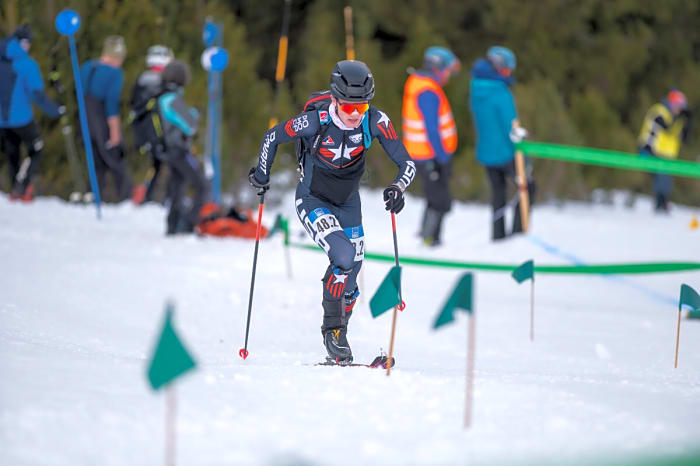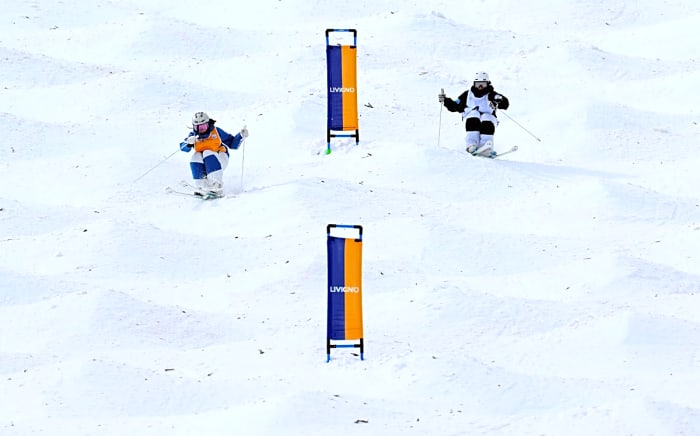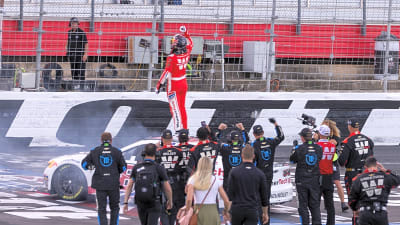Powder aims to feature only the best products and services. If you buy something via one of our links, we may earn a commission.
Just like cars, bikes, or golf clubs, skis come in countless different forms, each specialized in one thing or another. In fact, every year when brands send us their product catalogs for the upcoming seasons, I'm blown away over and over again by how many different models and categories exist. It's truly mind-bending, yet each ski offers a distinctly different feel on snow, providing fun and smiles in its own unique way.
In case you're as confused as the rest of us by all the different categories, here's a breakdown of what you might encounter on the wall of your local ski shop.
Want to keep up with the best stories and photos in skiing? Subscribe to the new Powder To The People newsletter for weekly updates.
All-Mountain Skis
The bread-and-butter skis almost every skier is familiar with, "all-mountain" skis are the jack-of-all-trades option. These are designed to be good in most conditions you'll encounter on the mountain, from groomers to moguls, cut-up off-piste snow, and even the occasional powder day.
While all-mountain skis come in many shapes and sizes, they tend to fall in the 95mm-105mm waist width bracket and are built for versatility over specialization. This year's popular all-mountain skis include the Rossignol Sender Free 100, Blizzard Anomaly 102, and the Atomic Maven 103 CTi.
Park/Freestyle Skis
Freestyle skis are a more specialized form of all-mountain skis that offer a more symmetrical shape and feature an upturned "twin-tip" tail. These are typically designed with softer flexes and a more centered binding mount point to allow skiers to ride switch (backward) and perform tricks on terrain park features like jumps, halfpipes, and rails.
Freestyle skis are built to take a beating and are often heavier and more durable than traditional skis, and park skiers often intentionally dull their edges to allow for a looser feel for butters and to prevent edges from catching when sliding metal rails. Some park skis designed for competition feature fully symmetrical construction, like the Faction Studio 1, while recently popular designs offer a more directional shape, like the Salomon Depart 1.0 or the Armada Stranger.
Powder Skis
Our favorite category here at POWDER Magazine, powder skis are purpose-built to provide flotation in deep, untracked powder snow. This is accomplished with extremely wide waist widths (115-125mm underfoot), the addition of rocker in the tip and tail, and shapes that allow the ski tips to plane on top of the snow at high speeds.
Some popular designs even offer full reverse-camber construction, where just the underfoot section of the ski touches the snow when laid flat. Some popular powder skis we've tested in the past year include the Atomic Bent 110, Blizzard Rustler 11, and the Armada ARV 112.
Freeride Skis
A subset of powder skis, freeride skis are designed to offer high-speed stability for skiers competing in freeride contests or skiing consequential big-mountain lines in resorts or in the backcountry. These skis tend to be stiffer than more traditional powder skis and feature slightly narrower (110-115mm) waist widths for extra maneuverability and added edge grip for firm conditions. Some popular freeride skis include the Völkl Revolt 114, Dynastar M-Free 112, and the Salomon QST Blank.
Race Skis
Ski racing is a very niche but quite popular corner of our sport that involves specialized equipment designed for extremely specific use cases. Racing skis are generally required to fall into a design envelope pre-defined by FIS (the international governing body of ski racing). You can read the full FIS requirements for ski dimensions and design specs here. Basically, the rules give minimum ski length, width, and sidecut requirements for each discipline (slalom, giant slalom, super-G, and downhill).
Racing skis are meant to go extremely fast and require a high level of skill and strength to control. Slalom skis tend to be the shortest and snappiest of the bunch to allow skiers to maneuver between tightly spaced gates, while downhill skis are extremely long, stiff, and meant to go more or less in a straight line.
Carving Skis
Direct descendants of FIS-regulated slalom racing skis, carving skis offer similar performance at a more attainable level for mere mortals. These typically feature an extremely tight turning radius (under 15 meters), narrow waist widths (60-70mm), and usually a stiff flex for better power transmission, easy carving, and extremely good edge hold on firm snow.
Carving skis have often been called "frontside" skis in reference to the "front side" of ski resorts, home to the best hardpack groomers. These are a great option for skiing at icy East Coast resorts or for anyone looking to lay trenches in corduroy out West.

Skimo Racing Skis
While still growing in North America, skimo racing (yes, it's short for ski mountaineering, though it has very little to do with it) is extremely popular in Europe. The 2026 Milano-Cortina Olympic Games will feature skimo racing as a discipline, with Lycra-clad racers literally running uphill and racing back down with skis on their feet. Skimo skis are designed to be as light as possible for maximum efficiency for uphill travel, sacrificing downhill performance.
These are paired with extremely light alpine touring tech bindings and soft, articulated ski boots that allow skiers to mimic a running motion while traveling uphill. Skimo skis have tip notches to allow for quickly attaching climbing skins, and all tend to fall at the FIS-regulated minimum waist width of 60mm underfoot.
Ski Mountaineering Skis
Professional athletes and high-level recreational skiers have been pushing the limits of human-powered backcountry skiing in recent years, taking skis to ever-crazier places across the globe. Some ski brands have followed suit by providing specialized ski designs that offer lightweight construction with features optimized for steep skiing.
While these don't differ too much from traditional ski touring skis, models like the Blizzard Zero G series, or the blackcrows Solis are designed with a long turning radius, specially-tuned rocker profiles, and lightweight but damp construction to allow skiers to safely ride extreme slopes in any condition.
Backcountry Touring Skis
General-use ski touring skis take shapes found in wider all-mountain skis and package them in a lighter weight construction to allow for more efficient uphill travel. Since these skis are primarily going to be used in softer backcountry conditions, the added weight and stiffness of a resort-only ski aren't necessary. Many backcountry skis replace metal and heavier woods in the core with carbon fiber and lighter woods like Paulownia and Karuba.

Mogul Competition Skis
While almost never skied outside of mogul competitions, mogul skis are purpose-built to slither down specially built mogul courses. These feature extremely narrow waist widths and short lengths to allow for quick, pivoting turns. Faction and K2 Skis currently sell these commercially.
Snowblades
Commonly seen on the feet of costume-clad and questionably sober skiers on gaper day, and made famous by none other than Shane McConkey's alter ego Saucer Boy, snowblades are extremely short twin-tip skis meant for freestyle skiing. These are also often called ski boards, ski blades, or Figl skis (short for Firn Gleiter—the German word for "corn snow sliders"), and are often mounted with a non-releaseable clamp-style binding.
More must-reads:
- Which fringe contender has best chance of solidifying CFP claim in Week 7?
- 'Where did they put their money?': Five things that have gone wrong for Texas besides Arch Manning's play
- The '100-rushing-yard games by NFL QBs' quiz
Breaking News
Trending News
Customize Your Newsletter
 +
+
Get the latest news and rumors, customized to your favorite sports and teams. Emailed daily. Always free!








